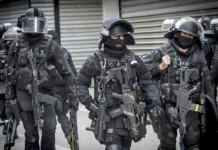While there are examples where a specific firearm was scaled down or up to accommodate various calibers, what is often overlooked is just how complicated that process actually is.
Bloke on the Range takes on this topic in the video, specifically relating to the SA80/L85 development and the problems it faced compared to the EM-2 rifle which was selected and then dismissed by the MoD a few decades earlier. He takes on why they didn’t just “scale” the EM-2 down instead since the “EM-2 worked” is the common wisdom while “the SA80/L85 is junk” is the competing wisdom. In truth the current A2 and incoming A3 L85’s sound like they work well and probably far better than the EM-2 just as the current M4A1 is a superior firearm to the M1 and M14.
Short version… it is way more complicated than changing sizes because firearms are pressure sensitive machines. All the parts have to work at pressure and any given piece may not ‘scale’ and still do that. Changing calibers is, mechanically speaking, building a new firearm. This is why early “drop-in” solutions for so many systems worked like hot garbage. All the operating bits have to be made for the caliber, and that means differences. Springs, buffers, locking lugs, bolt face, extractors, ejectors, magazines, gas systems and/or delay locking mechanisms.
These things do not magically scale, they are purpose built. Mechanical concepts, like a short stroke piston or roller delay may still be viable, they may even work within dimensional limits without a change. But it must be considered from the basis of pressure and conceptually this makes ‘scaling’ less viable than building a “new firearm” with the desired features.



